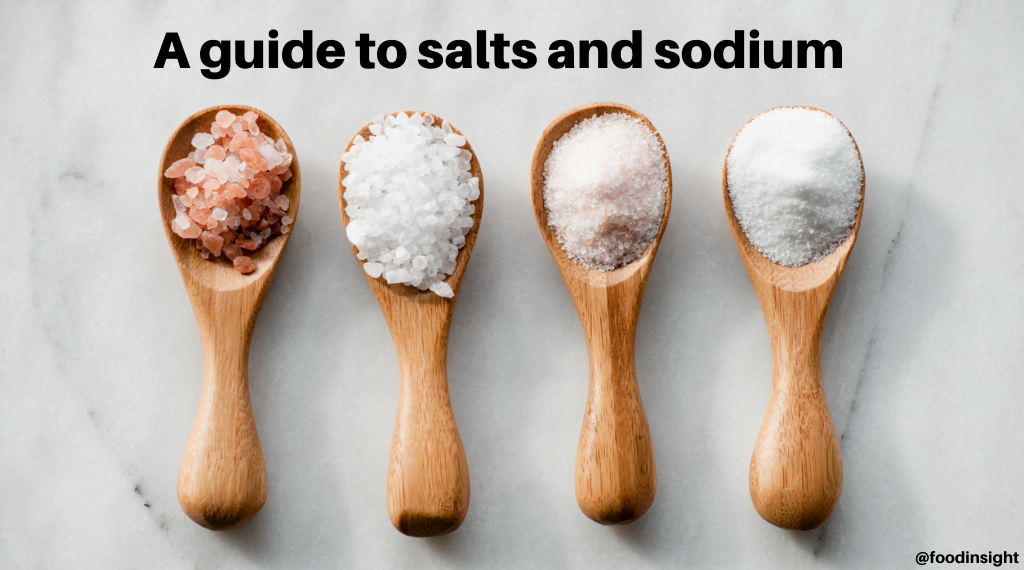Sodium is an essential part of everyone’s diet—the human body could not function without it. However, there can be too much of a good thing. Americans tend to overdo it on sodium, which can contribute to many health issues, including high blood pressure and heart disease. However, it is not always easy to know what sodium is in and how much you are consuming. While table salt is a common household staple, there are other forms of salt in the food supply that should be considered.
How Sodium is Used
It can seem like sodium is virtually everywhere, but that’s because it serves many different purposes. Though most sodium in the diet comes in the form of salt, it is also present in things like baking soda – sodium bicarbonate. Despite popular belief, sodium is not synonymous with salt. According to the U.S. Food and Drug Administration (FDA), “sodium is an individual mineral and one of the two components of table salt, sodium chloride.” This means that sodium does more than simply flavor a dish. Though in the form of salt it can add or enhance the flavor of food, sodium may also be used to preserve foods, to make them last longer, and to add texture and volume to baked foods.
Types of Salt and Alternatives
While 70% of sodium comes from consumption of packaged foods, the remaining 30% is often added during cooking, at the table or is naturally present in foods. In order to better manage sodium intake in that 30%, it is important as a consumer to be aware of the different types of salts and their alternatives.
A trip down the spice aisle in the grocery store might present options from iodized salt, to sea salt, to pink salt and everything in between. It is most important to note that although some of these salt types are commonly touted for potential health benefits, they all have the same chemical makeup—sodium chloride. Here are a number of salts that you should know about.
- Table salt (sodium chloride), is the most commonly consumed salt in our diets. It is an important pantry staple that’s used to enhance flavor, however its use in food processing is vital for flavor, texture and preservation to enhance shelf life of many packaged foods. According to Harvard’s “Nutrition Source”, most American’s consume about 1.5 teaspoons of salt per day – equivalent to3,400 mg sodium, which is more than what our bodies need. Table salt is also commonly called iodized salt.
- Sea salt, often considered as healthier than table salt, is coarser than table salt. It is less processed than table salt and contains other trace minerals which add color and flavor. Sea salt and table salt are the same when it comes to nutritional value and both contain similar amounts of sodium.
- Pink Himalayan salt is a type of rock salt. It too is coarser than table salt and similar to nutritional value. Studies suggest that pink salts contain a variety of essential minerals (iron, zinc and calcium), as well as trace levels of non-essential minerals such as arsenic lead and cadmium. Its pink color is derived from trace levels of potassium, magnesium and calcium which also explains why it tastes so differently than table salt. It’s often referred to as a gourmet salt as it has a saltier flavor which means one can achieve the same taste with less salt.
- Kosher salt is also typically coarse, though it differs from table salt in that it is does not have added iodine, which is an essential mineral for thyroid health. Its name is derived from Jewish dietary requirements and is produced under kosher supervision. In addition to being free of iodine, it is uniquely different from table salt, both in size and texture of its flakes.
- Potassium chloride is a potassium-based salt that may be used to replace table salt. Additionally, it does not carry a high health risk like sodium-based salts. On the ingredient list, potassium chloride is identified as potassium salt to better inform consumers that it is a salt substitute.
- Rock salt doesn’t actually work as well in cooking or when seasoning your favorite dish. However, it is also used as an edible salt. In food, it’s mostly used in homemade ice cream because the granules are larger; they don’t dissolve as fast and are distributed more uniformly in the ice bath.
Though the different types of salt are not that different when it comes to reducing sodium, there are plenty of alternatives to salt that can add flavor without adding sodium. Spices like peppercorns and cumin can add a punch of flavor to many dishes, while balsamic vinegar and garlic may give a meal the acidity or zest that is missing. The flavor enhancer monosodium glutamate (MSG) can also be used as an alternative to salt. However, MSG alone doesn’t have a taste or flavor, rather it enhances the flavor of other foods providing a familiar savory and umami flavor.
It may take a little creativity in the kitchen to create flavorful dishes that are low in sodium, but the health benefits are huge. Along with FDA guidance for commercially prepared foods, it may be easier to decrease sodium intake now than ever, which is good news for heart health.
This article was written by Courtney Schupp, MPH, RD
